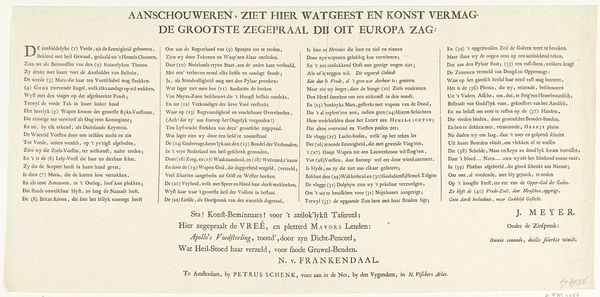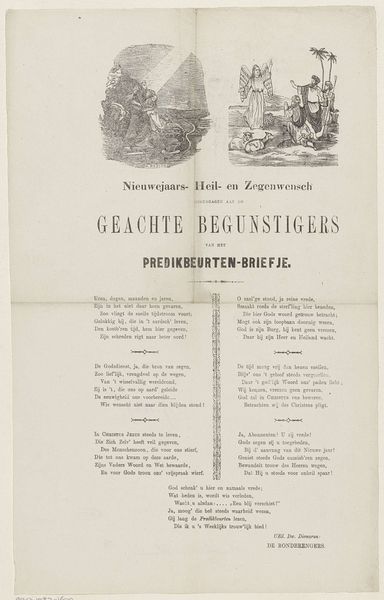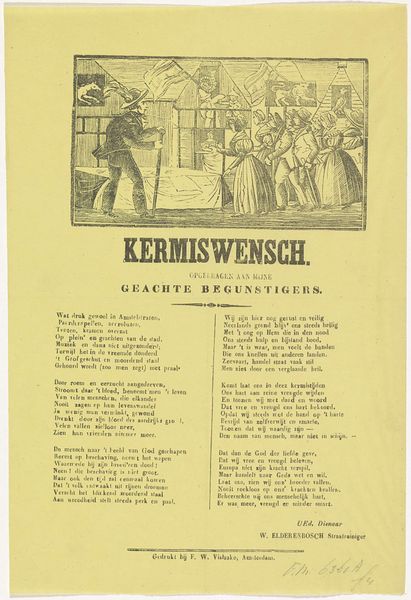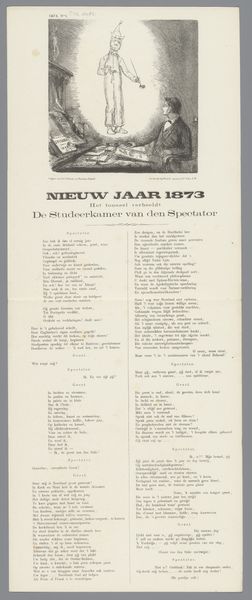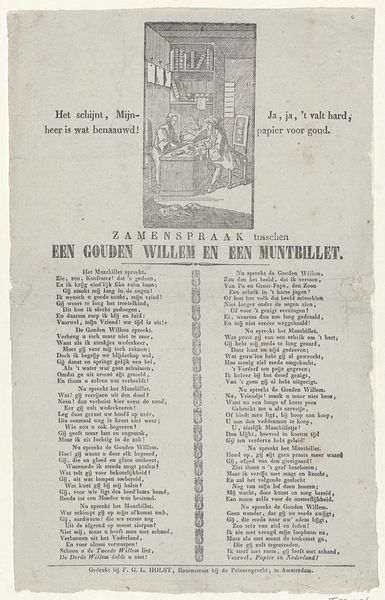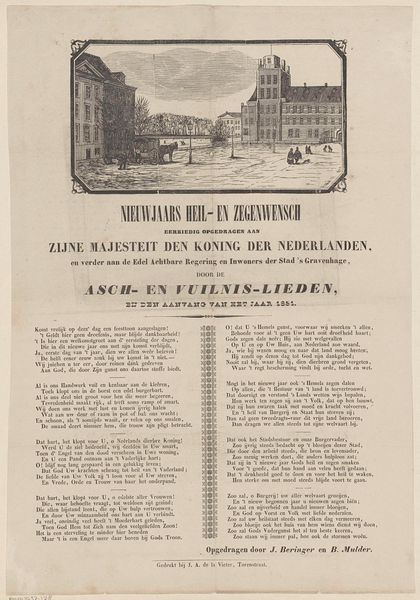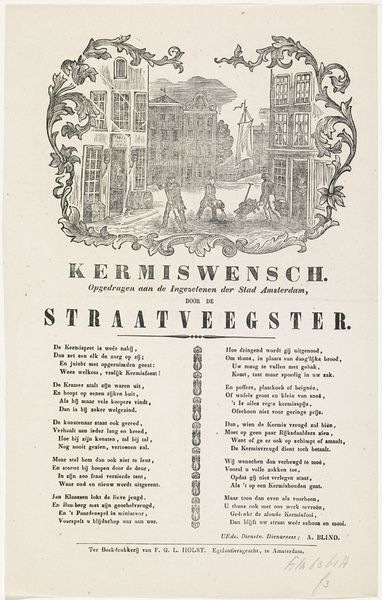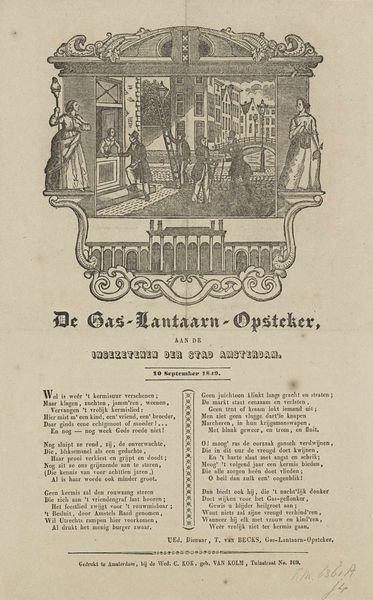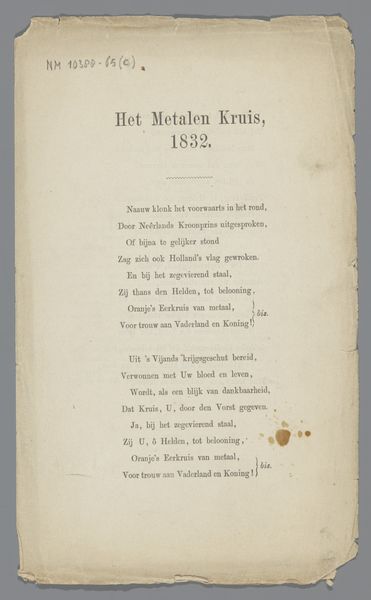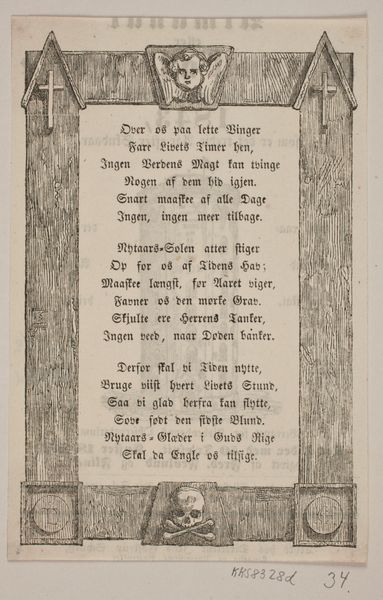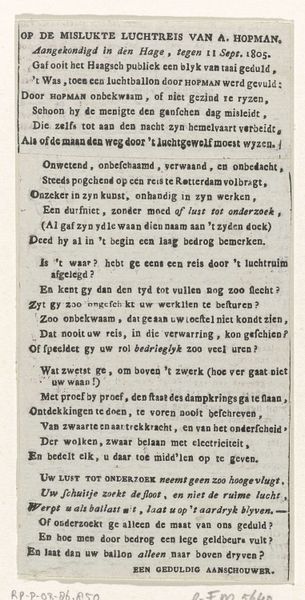
Nieuwjaarswens van de Amsterdamse straatvegers, ca. 1860-1880 1860 - 1880
0:00
0:00
graphic-art, print, typography, poster
#
graphic-art
# print
#
typography
#
poster
Dimensions: height 311 mm, width 214 mm
Copyright: Rijks Museum: Open Domain
Curator: I thought we might examine this striking piece of typography from the Rijksmuseum’s collection: a New Year's greeting from the Amsterdam street sweepers, dating from around 1860 to 1880. Editor: It strikes me as somewhat bleak, even for a New Year's greeting! The monochrome palette and densely packed text give it a utilitarian feel, not particularly celebratory. What's going on here? Curator: It is certainly practical. As the title states, this broadside, printed with letterpress, graphic art and typographic elements, served as a New Year's wish—presumably distributed, or perhaps sold, by Amsterdam's street cleaning workforce to their patrons. Editor: Ah, okay, I see now, so it’s literally a piece of working-class ephemera. Considering its materiality – a printed poster, meant to be distributed – and that its purpose would be for raising money and demonstrating labor value. Curator: Precisely. The text contains several stanzas of verse, essentially offering blessings of health and prosperity to their "esteemed patrons." It is interesting to think about this object in the context of growing urbanisation. How was civic cleanliness being valued and rendered in visual form? Editor: I like how it bridges social history and material culture. What does it tell us about social hierarchies, class relationships, and the role of these workers in Amsterdam society at that moment? I would also wonder, for example, where these kinds of papers usually ended up after they had circulated, and how that impacts the ones we can find preserved today. Curator: And what about the visual language itself? Note the small illustration at the top—seemingly a wintery street scene. Does it reinforce a sense of public service, or is it more symbolic? It also looks to me like there is something hand written around the edges – like a set of unique identifying numbers. I wonder if the hand annotations have significance when contextualized. Editor: That’s right – someone handled and accounted for this print, demonstrating its utility. Ultimately, this 'New Year's Wish' provides us a valuable, and maybe even uncommon look, into the everyday life and socio-economic structures of 19th-century Amsterdam. Curator: Indeed. It’s a testament to how even the most modest, functional objects can illuminate broader historical narratives when we consider their material existence.
Comments
No comments
Be the first to comment and join the conversation on the ultimate creative platform.

